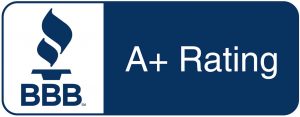July 6, 2018

When it comes to a flood, only a few inches of water can cost you thousands of dollars in damage. Standard homeowner’s insurance policies do not cover flooding by causes outside of the home. For your homeowner’s insurance to cover flooding, it requires a special policy. Flood insurance policies often include confusing exclusions and restrictions. Because of this, insured property owners and municipalities facing flood losses often need legal representation in order to obtain the compensation they deserve.
The National Flood Insurance Program covers direct physical damage by flood to your building and/or personal property. The Standard Flood Insurance Policy only pays for flood damage to your insured property and only up to the policy limit. Contents are not automatically included. If contents coverage is desired a specific amount must be named and a separate premium charged, but it doesn’t need to be a separate policy. Contents coverage limits are $100,000 for residential policies To qualify for flood insurance, you need an Elevation Certificate (EC) from the Federal Emergency Management Agency (FEMA).
Additionally, the homeowner should be aware of the terms Actual Cash Value and Replacement Cost Value.
Actual Cash Value (ACV) is the cost to repair or replace an insured item of property at the time of the loss, less physical depreciation. The value of physical depreciation is based on the age and condition of the item. Personal property, i.e. contents, is always paid at ACV.
Replacement Cost Value (RCV) is the cost to repair or replace an insured item of property at the time of the loss without a deduction for physical depreciation. RCV is available
when the insured property is the primary residence and the amount of coverage is equal to 80% or more of the replacement cost of the building. RCV is also available for residential condominium buildings. There is no required amount of coverage, but residential condominium buildings not insured to 80% of replacement cost will experience a reduction in their claims payments.
Here is a summary of what is
NOT covered for your building or personal property, according to the FEMA fact sheet.
- Damage caused by moisture, mildew, or mold that could have been avoided by the property owner or which are not attributable to the flood
- Damage caused by earth movement, even if the earth movement is caused by flood
- Additional living expenses, such as temporary housing, while the building is being repaired or is unable to be occupied
- Loss of use or access of the insured property
- Financial losses caused by business interruption
- Property and belongings outside of an insured building such as trees, plants, wells, septic systems, walks, decks, patios, fences, seawalls, hot tubs, and swimming pools
- Currency, precious metals, and valuable papers such as stock certificates
- Most self-propelled vehicles such as cars, including their parts (see Section IV.5 in your policy)
Just as a reminder, once you purchase flood insurance, it takes 30 days for the coverage to become effective. There are also eligibility requirements and a number of exclusions. Because of the exclusions, it is often difficult for people who have incurred losses to receive the compensation that they deserve without legal representation.
If you have faced property loss due to flooding, navigating the rules of coverage limits, exclusions and regulations can be complicated. If you have questions, contact your insurance agent or insurer.
 When it comes to a flood, only a few inches of water can cost you thousands of dollars in damage. Standard homeowner’s insurance policies do not cover flooding by causes outside of the home. For your homeowner’s insurance to cover flooding, it requires a special policy. Flood insurance policies often include confusing exclusions and restrictions. Because of this, insured property owners and municipalities facing flood losses often need legal representation in order to obtain the compensation they deserve.
The National Flood Insurance Program covers direct physical damage by flood to your building and/or personal property. The Standard Flood Insurance Policy only pays for flood damage to your insured property and only up to the policy limit. Contents are not automatically included. If contents coverage is desired a specific amount must be named and a separate premium charged, but it doesn’t need to be a separate policy. Contents coverage limits are $100,000 for residential policies To qualify for flood insurance, you need an Elevation Certificate (EC) from the Federal Emergency Management Agency (FEMA).
Additionally, the homeowner should be aware of the terms Actual Cash Value and Replacement Cost Value.
Actual Cash Value (ACV) is the cost to repair or replace an insured item of property at the time of the loss, less physical depreciation. The value of physical depreciation is based on the age and condition of the item. Personal property, i.e. contents, is always paid at ACV.
Replacement Cost Value (RCV) is the cost to repair or replace an insured item of property at the time of the loss without a deduction for physical depreciation. RCV is available when the insured property is the primary residence and the amount of coverage is equal to 80% or more of the replacement cost of the building. RCV is also available for residential condominium buildings. There is no required amount of coverage, but residential condominium buildings not insured to 80% of replacement cost will experience a reduction in their claims payments.
Here is a summary of what is NOT covered for your building or personal property, according to the FEMA fact sheet.
When it comes to a flood, only a few inches of water can cost you thousands of dollars in damage. Standard homeowner’s insurance policies do not cover flooding by causes outside of the home. For your homeowner’s insurance to cover flooding, it requires a special policy. Flood insurance policies often include confusing exclusions and restrictions. Because of this, insured property owners and municipalities facing flood losses often need legal representation in order to obtain the compensation they deserve.
The National Flood Insurance Program covers direct physical damage by flood to your building and/or personal property. The Standard Flood Insurance Policy only pays for flood damage to your insured property and only up to the policy limit. Contents are not automatically included. If contents coverage is desired a specific amount must be named and a separate premium charged, but it doesn’t need to be a separate policy. Contents coverage limits are $100,000 for residential policies To qualify for flood insurance, you need an Elevation Certificate (EC) from the Federal Emergency Management Agency (FEMA).
Additionally, the homeowner should be aware of the terms Actual Cash Value and Replacement Cost Value.
Actual Cash Value (ACV) is the cost to repair or replace an insured item of property at the time of the loss, less physical depreciation. The value of physical depreciation is based on the age and condition of the item. Personal property, i.e. contents, is always paid at ACV.
Replacement Cost Value (RCV) is the cost to repair or replace an insured item of property at the time of the loss without a deduction for physical depreciation. RCV is available when the insured property is the primary residence and the amount of coverage is equal to 80% or more of the replacement cost of the building. RCV is also available for residential condominium buildings. There is no required amount of coverage, but residential condominium buildings not insured to 80% of replacement cost will experience a reduction in their claims payments.
Here is a summary of what is NOT covered for your building or personal property, according to the FEMA fact sheet.




